Looking to learn about water deer? You’re in the right place! Here, we’ll tell you everything you need to know about the so-called vampire deer.
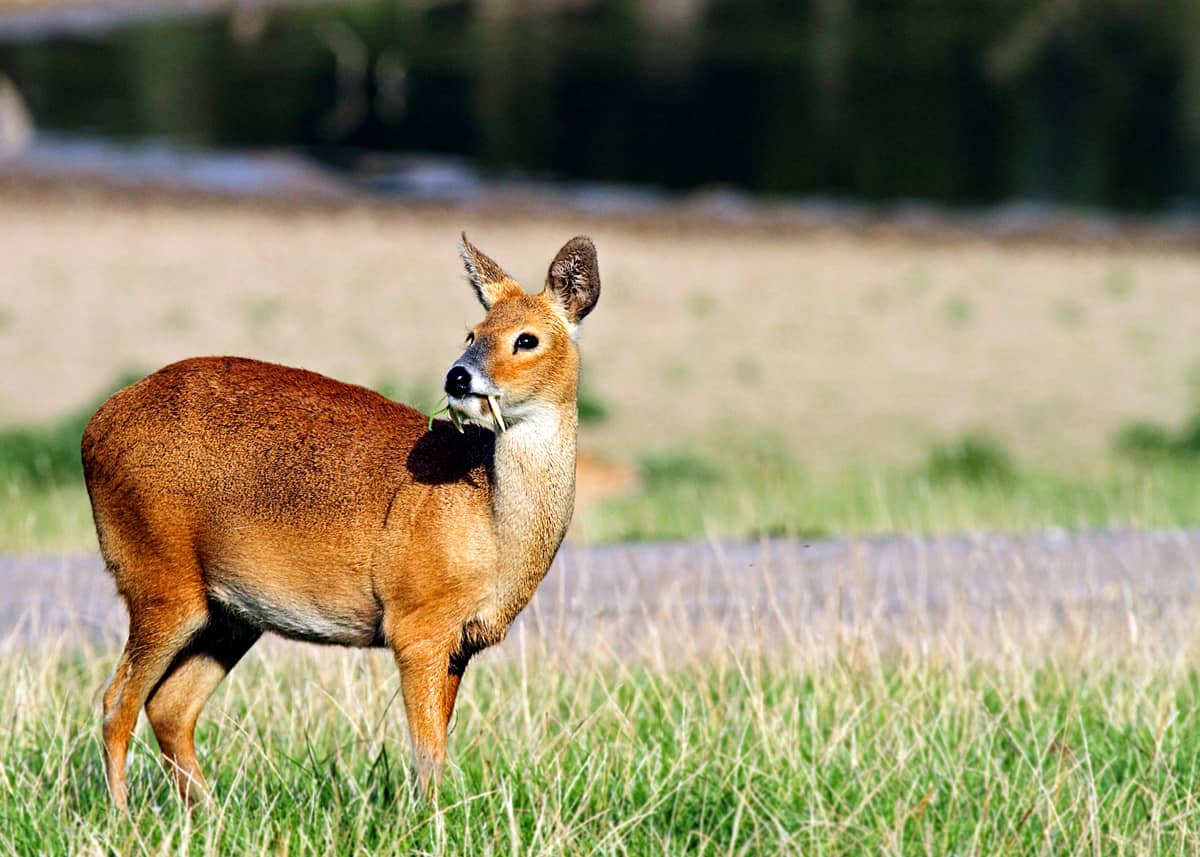
They sound like something from a child’s imagination. What if deer grew fangs instead of antlers? What if they hopped like rabbits and fought like goats? What if their milk helped your gut bacteria?
Well, brace yourself. Water deer are very real!
Table of Contents
45 Water Deer Facts (Vampire Deer)
Native to both Korea and China, water deer have fascinated humans for centuries. They’re such an odd collection of quirks that many people do a double-take when they first see a picture of these fanged and furry beasts.
When you look a little closer, however, you’ll realize that there’s more to the water deer than their prominent teeth or rounded ears, and they’re not as scary as they may sound.
They live interesting, exciting lives, and as a semi-endangered species. Are you ready to learn more about some of nature’s weirdest creatures? Read on!
1. What does the water deer look like?
Water deer are fuzzy, four-legged creatures that look a lot like regular deer from a distance. But once you adjust the magnification of your binoculars, their differences will become apparent.
For starters, they don’t have antlers. Neither males or females have them. Their Latin name even translates to “without armor.”
Their bodies are thicker and stockier than normal deer. Water deer can look downright chunky when compared to their cousins!
This has more to do with their body structure than their body weight, however. They have powerful hind legs that are longer than their front legs, so their haunches are raised at a higher angle than their shoulders.
Last but certainly not least, water deer have prominent front teeth that stick out from their jaw. These are commonly referred to as “fangs” or “tusks,” but they’re really just extra-long canines.
2. What’s the difference between Chinese and Korean water deer?
There are two sub-species of water deer. The first, Hydropotes inermis inermis, lives in China. The second, Hydropotes inermis argyropus, lives in Korea.
There’s very little to no difference between the breeds. The Korean water deer might be a little more reddish-brown than true brown, and anecdotal evidence suggests that they might be a tad smaller, but that’s about it. Technically, their genetic makeup is the same.
3. Are water deer real?
Yes. Water deer are indeed real. They make such an odd picture that you might be tempted to cry “Photoshop!” But they’re a genuine species living in Asia.
4. Can water deer run?
Yes and no. Water deer can move very fast across land, but it isn’t true running. It’s more like a rapid hopping that’s powered by their back legs.
5. Can water deer swim?
Yes. Water deer love the water, and they can swim for several miles before getting tired. This is one of the reasons why they’ve spread to various Korean and Chinese islands; they have no problem crossing watery borders.
6. Are water deer found outside of Asia?
While they’re native to Asia, water deer have also taken up residence in France, Argentina, England and parts of the United States.
They were first imported to Great Britain in the 1870s, and between escapes, transfers and breeding programs, they managed to populate different areas overseas.
7. Are water deer aggressive?
While not hostile to humans, water deer can get quite violent towards other members of their species.
Males are highly territorial, and have a number of ways of marking their territory:
- They’ll scent-mark a claimed area with a combination of urine and feces
- They’ll also dig trenches and rub their heads all over trees, branches, and logs to spread their scent around
- Some will even bite off reeds and branches to visually mark their turf
Males will also fight over females when it’s rutting season. They use their long, hard teeth as battering rams, and they try to stab and scratch each other with the sharp edges.
It’s quite common to see wild water deer with torn ears or scars on their faces from their many altercations.
Females won’t engage in dominance battles, but they aren’t exactly wallflowers. Before and after giving birth, they’ll chase other females out of their territory to ensure the safe delivery of their fawns. You don’t want to mess with a mama.
8. Are there any fighting rituals among male water deer?
Yes. When two males are engaged in a dominance battle, they’ll approach each other in a slow, stiff way before turning to walk in parallel lines as they assess each other.
One male might decide the fight isn’t worth it, and he’ll turn and flee while the other chases him with high-pitched clicking noises.
If they decide to go ahead with the fight, that’s when the fangs come out and ears get torn. The good news is that fights are rarely fatal.
One male will eventually submit to the other by laying his head and neck flat on the ground, and the winner will allow him to leave without hurting him any further.
9. Why is the water deer called a vampire deer?
You might see the nickname “vampire deer” for water deer, and the reason is exactly what you think: their long, pointed canines.
On a relaxed water deer, these teeth aren’t any cause for alarm; they slope downwards with their sharp points facing the ground.
On a threatened or territorial water deer, however, you’ll see them pull back their lips and thrust their teeth out as a sort of double-pronged weapon.
It can be an intimating sight from such a cuddly face!
10. Why do water deer have tusks?
This is a great question, and the simple answer is that we don’t know. Water deer are herbivores, so they don’t need their pointed fangs for ripping through prey.
And they prefer to flee from predators rather than facing them head-on, so the tusks aren’t a defensive weapon. They’re really only used for dominance battles between males.
11. Do all water deer have tusks?
All water deer have fangs, but not all fanged deer are water deer. There’s also a species called the musk deer that looks quite similar to the water deer, and they have long, pointed canines as well.
There are also species like the muntjac and tufted deer that don’t look like water deer at all, but they share the same fangs.
12. How big are water deer tusks?
In males, tusks can reach as long as 7 – 8 centimeters, but they’re usually 5 – 6 centimeters on average.
Females have much tinier tusks. They only measure 0.5 – 1 centimeter.
13. Do water deer bite?
Water deer don’t really bite. Even when they’re fighting other males, they use their fangs for stabbing and slicing rather than biting.
Their teeth are reserved for things like chewing leaves or breaking off branches to mark their territory.
14. How big is a water deer?
Water deer are relatively small animals. They only measure about 2 – 3 feet long, and their shoulder height is 18 – 22 inches.
Some hunters say that the Korean sub-species is smaller than the Chinese one, but this hasn’t been verified anywhere. For all intents and purposes, both species are the same size.
15. How much does a water deer weigh?
The average water deer weighs between 20 – 31 pounds.
16. How did the water deer get its name?
Water deer get their name from their preferred habitat. They live near rivers, streams, swamps, brooks and other sources of water, so the moniker was probably inevitable.
As for their scientific name, Hydropotes inermis, it originates from two separate languages:
- Hydropotes is Greek and comes from the words húdōr (“water”) and potḗs (“the fact of drinking”).
- Inermis is Latin, and it means “unarmed” or “defenseless.” Its root words are in (“without”) and arma (“armor”). It refers to the fact that water deer don’t have antlers.
17. What is the water deer Latin name?
Each sub-species of water deer has its own scientific name:
- Chinese water deer – Hydropotes inermis inermis
- Korean water deer – Hydropotes inermis argyropus
18. What other names does the water deer have?
Water deer are sometimes known as “vampire deer” and “fanged deer.”
However, these nicknames can be applied to other deer species with tusks, so don’t assume that every vampire deer is a water deer. It might be a reference to a muntjac or musk deer.
19. Do water deer have antlers?
No. Water deer are born without antlers of any kind. They’re also born without their tusks, but these will grow in as they mature.
20. Are water deer and musk deer the same?
They might look like long-lost siblings, but water deer and musk deer are entirely separate species with their own scientific classifications.
Water deer are under the Cervidae umbrella while musk deer come from the Moschidae category.
21. What’s the difference between water deer and musk deer?
Water deer and musk deer share a lot of similarities. They lack antlers; they have fangs; they’re small and stocky.
When it comes down to it, however, they just aren’t the same animal:
- Water deer are native to China and Korea while musk deer are found primarily in the Himalayas.
- Water deer stick close to water sources while musk deer aren’t afraid to venture into fields and mountains.
- Musk deer are also in possession of a large, heavy scent gland that hangs below their genitals and is highly valuable on the black market.
Water deer are sometimes killed by hunters who are hoping to make bank from a musk deer and don’t realize that they’ve gotten the wrong animal.
22. How many kinds of fanged or tusked deer are there?
There are many kinds of tusked deer in the wild, including:
- Water deer
- Musk deer
- Tufted deer
- Mutjacs
Additionally, there are a number of sub-species. You already know about Korean and Chinese water deer.
But there’s also a good half-dozen variation of musk deer, including the dwarf musk deer, the black musk deer, and the white-bellied musk deer.
23. Are water deer social animals?
No. Water deer are solitary creatures that only come together for mating, and males, in particular, are very territorial about their land, so they don’t appreciate trespassers.
Females are slightly more welcoming, and small groups of females will sometimes co-exist in the same area, but these bonds are superficial.
If a predator comes along, they’ll flee in separate directions in an “every woman for herself” kind of way.
Females have also been known to chase off other females before and after giving birth to make sure that the area is safe for the fawns.
24. How long do water deers live?
Water deer live about 10 – 12 years on average.
Studies suggest that they have longer lifespans in captivity than in the wild.
25. What eats water deer? Predators and Threats
Water deer are vulnerable to large carnivores such as leopards, foxes, bears and raccoon dogs.
Young fawns can also fall victim to birds and weasels.
26. How do water deer defend themselves?
Despite their aggression with each other, water deer don’t seek out fights with other creatures.
Their teeth simply aren’t enough to defend themselves against big, carnivorous animals, and they know it.
When a predator is near, they’ll either hide among the tall reeds of the riverbank or take off in a desperate flight to evade the danger.
One interesting thing about water deer is that they’ll sound off a warning bark to others of their kind when a predator is approaching. They do this even though they’re solitary creatures that don’t spend a lot of time with one another.
So when push comes to shove, water deer aren’t entirely selfish. They’ll sound the alarm for everyone when a leopard wanders into their turf.
27. Is the water deer endangered?
The water deer is listed as vulnerable by the International Union for the Conservation of Nature (IUCN).
Despite this, they’re frequently hunted as trophies, and they’re considered a nuisance in certain villages and provinces because of the damage that they can do to farms.
The Korean government even offers a bounty for the killing of water deer during harvest season.
28. How many water deer are left in the world?
Chinese water deer used to be abundant, but it’s estimated that there are only 10,000 or so remaining in the wild.
Korean water deer have been studied much less than their Chinese counterparts, so there are no projected numbers for their population.
29. What threats face the water deer?
The biggest danger to water deer is habitat loss. Whenever someone builds a dam, cuts down a forest or starts a wildfire, it has ripple effects on the water deer’s ecosystem.
For example, there might be fewer plants for them to eat, or there might be less vegetation for them to hide in when a predator comes along. Their favorite river might flood or dry up and force them to move somewhere new.
Humans are also a threat to water deer. They’ve been hunted for centuries because their fanged appearance makes them such a unique prize.
And, as previously mentioned, the Korean government considers them a nuisance during farming season and offers a monetary reward to anyone who can get rid of them.
They’re also killed for meat, medicine, and other cultural purposes.
30. Are water deer carnivores?
No. Water deer have no interest in meat. They’re solid herbivores.
31. What do water deer eat?
Water deer will munch on everything from grasses to reeds. They like herbs, flowers, leaves, bushes, shrubs, mosses, and lichens.
Some have even been observed eating from willow and black locust trees.
32. Are water deer nocturnal?
They’re more active at dusk, but water deer aren’t truly nocturnal. They just like the cover of darkness when they forage for food or tend to their babies.
The actual classification would be crepuscular.
They rely primarily on smell rather than sight, so they aren’t bothered by nighttime vision loss.
33. Do water deer mate for life?
No. When it comes to water deer, the males are only there for copulation; they have no interest in mom or baby.
They don’t guard the females when they’re pregnant, and they don’t participate in any child-rearing after the fact.
Water deer are pretty much the deadbeat dads of the animal kingdom.
34. What’s pregnancy like for a female water deer?
Female water deer are pregnant for 170 – 210 days. They’ll either wander away from crowded territories or chase off any stragglers in their chosen area.
When it’s time to give birth, they choose a safe, secluded spot that’s hidden by weeds or thickets, and the babies will remain there for several weeks. Mom will only leave them when she needs to look for food.
35. What are young water deer like?
Young water deer are called “fawns” just like other species of deer. They’re mammals, so they nurse from their mother until they’re old enough to eat solid food. This takes about two months.
There are a couple of interesting things to note about the appearance of water deer fawns:
- They aren’t born with tusks. The tusks start developing at 6 – 7 months, but they won’t reach full size until the deer is a good 18 – 24 months old. The tusks are also semi-hollow until their roots close.
- Their fur is spotted in their first few months of life. This is a natural defense mechanism to camouflage them among the weeds and reeds of their birthplaces. Their fur will darken into a solid color as they age.
36. How many babies do water deer have?
It’s said that wild water deer can give birth to as many as 6 – 7 fawns at a time, but they’re much less fertile in captivity. They usually only produce 2 – 3 fawns in zoos.
37. Are water deer loud?
Water deer can get quite loud. They communicate with a variety of noises, including barks, growls, wails, whistles, and yips.
Males emit “contact calls” to females when they want to mate, and they challenge each other for dominance with a clicking sound made by their molars.
Females gather their fawns with soft peeps. Both males and females will make a screaming noise when chased by predators.
38. Do water deer carry disease?
Studies of captured Korean water deer have shown the presence of pathogens related to the bovine viral diarrhea virus (BVDV).
While these aren’t dangerous to humans, they can be fatal to livestock if the deer start to invade farms, contaminate water supplies and spread their feces in territorial displays.
It’s also possible that water deer could carry something called chronic wasting disease or “zombie deer disease.” It’s been found in wild deer in the U.S., Canada, Norway, and South Korea.
And, while it hasn’t been specifically linked to water deer, it’s possible that various deer species could transmit it to one another.
Basically, if you ever see a zombie deer, run!
39. Are water deer poisonous or venomous?
No. Despite the presence of fangs, there’s nothing poisonous or venomous about water deer.
They don’t even bite each other in their ritualistic battles; they use their teeth as jabbing weapons rather than snapping ones.
40. Do water deer have any value or significance in Asian culture?
Yes. Not only do people hunt them for prizes and bounties, but water deer also produce colostrum after giving birth.
Colostrum is a special kind of milk that’s high in protein and antibodies, so it has a lot of uses in everything from folk medicines to superfood supplements.
Water deer are also commonly confused with musk deer, another species of fanged deer. On the black market, the scent glands of musk deer can sell for as much as $45,000 per kilogram.
They’re used in perfumes, medicines and even aphrodisiac potions, so they’re in high demand.
Hunters will frequently shoot first and ask questions later when they see a fanged deer through their rifle scope.
41. Where does the water deer live?
Water deer are native to China and Korea. In China, they’re found along the Yangtze River and the coasts of the Jiangsu province, and there’s a sizeable population on the islands of Zhejiang.
In Korea, they’re found all across the country except in big cities like Seoul. There are also smaller, non-native populations scattered around Europe and the United States.
42. What is the habitat of the water deer?
Like their name suggests water deer like water. They stick close to rivers, streams, and swamps, and they’ll only branch out to grasslands or forested areas if there’s a water source nearby.
They’re capable swimmers, so they aren’t afraid of taking a dip. They tend to hide in waterside weeds when predators come along.
43. Do people eat water deer?
Yes. Water deer are caught and killed for venison just like other deer species, and you can find all sorts of water deer recipes online.
44. Where can I see the water deer?
If you’re intrigued by the long fangs and fluffy tails of the water deer, the easiest place to see them is the zoo.
While not as common as lions or tigers, you can still find them at various locations around the world.
Spotting a water deer in the wild is a much tougher endeavor. Hunters do it, but they’re trained to detect things like broken branches and scent markings.
And these are often the only signs of the much-camouflaged water deer. You might need the help of a wildlife guide to observe these creatures in their natural habitat.
45. How can I help the water deer?
Have you been moved by the plight of the water deer? Do you want to help them recoup their losses and recover their numbers? There are a few ways that you can make a difference:
- Money. There are lots of wildlife and environmental groups dedicated to helping the native species of Asia. Even if you can only make a one-time donation to the cause, every little bit helps.
- Support. While there are no organizations dedicated solely to water deer, they’re often promoted or protected by groups like the People’s Trust for Endangered Species. Consider signing up for a newsletter to show your interest in conservation.
- Awareness. Share our facts with others!
Dracula Deer: Yay or Nay?
They’re small. They’re weird. We hope that these water deer facts have shed some light on an often-overlooked species! Let us know in the comments what you learned and if you have any more questions.
Drew Haines is an animal enthusiast and travel writer. She loves to share her passion through her writing.
She graduated high school at sixteen and started her own business, Everywhere Wild Media. And she runs Everywhere Wild and JustBirding. She also guest blogs on Storyteller.Travel
She lived in Ecuador for 6 years and explored the Galapagos Islands. Currently based in N.S., Canada.

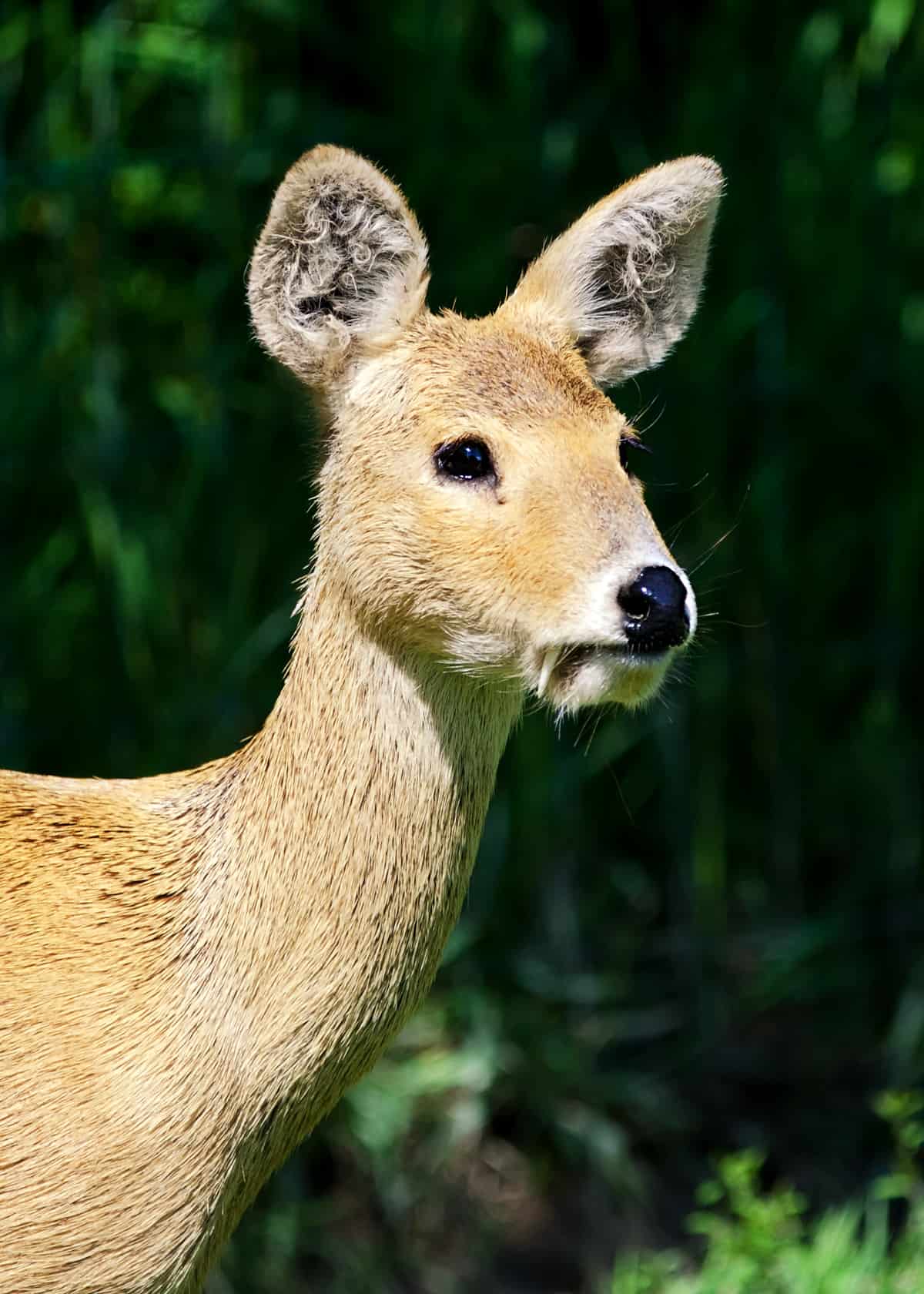
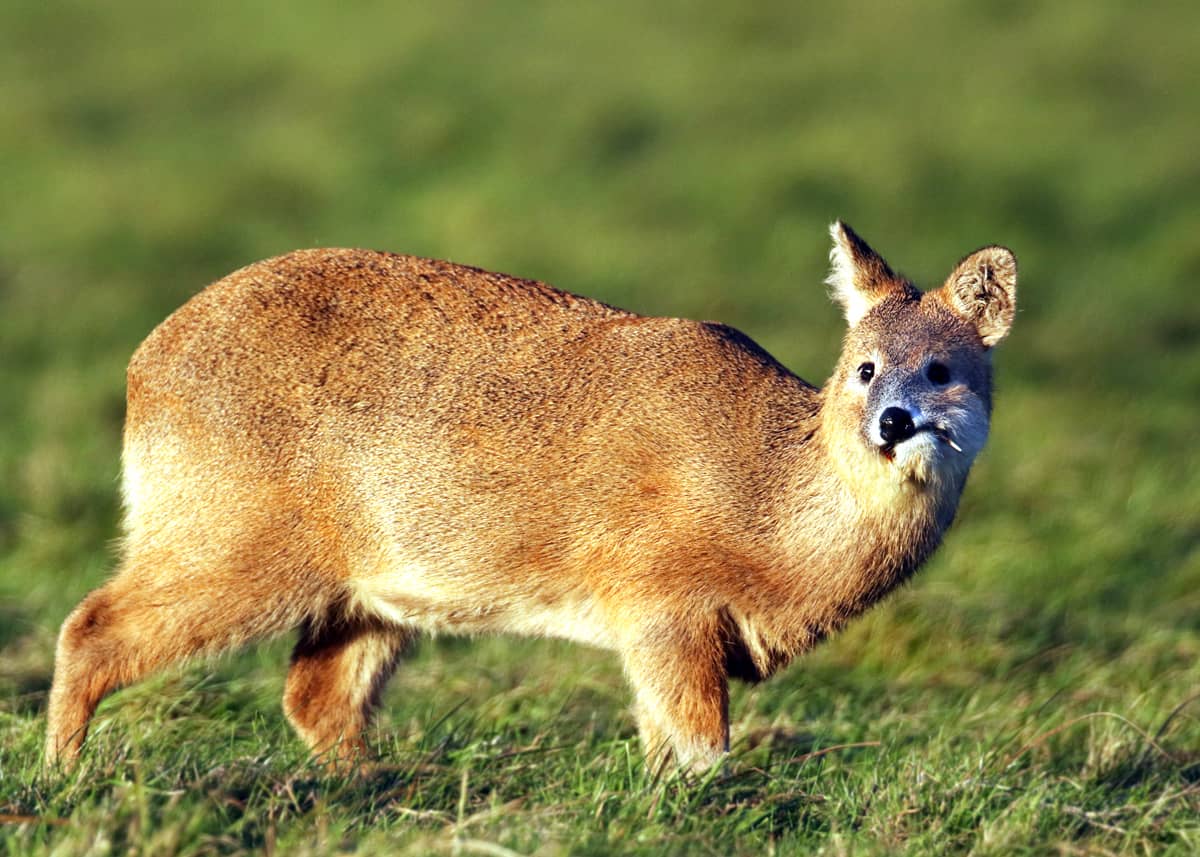
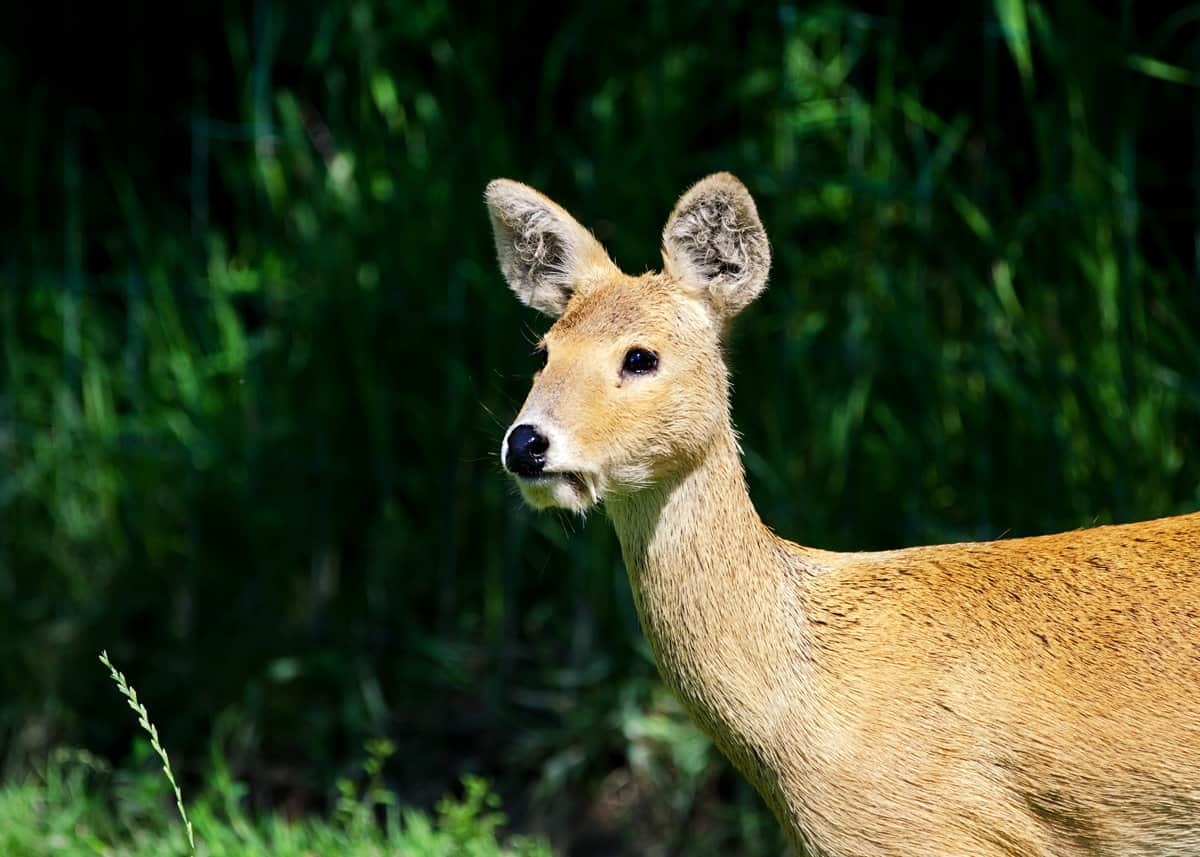
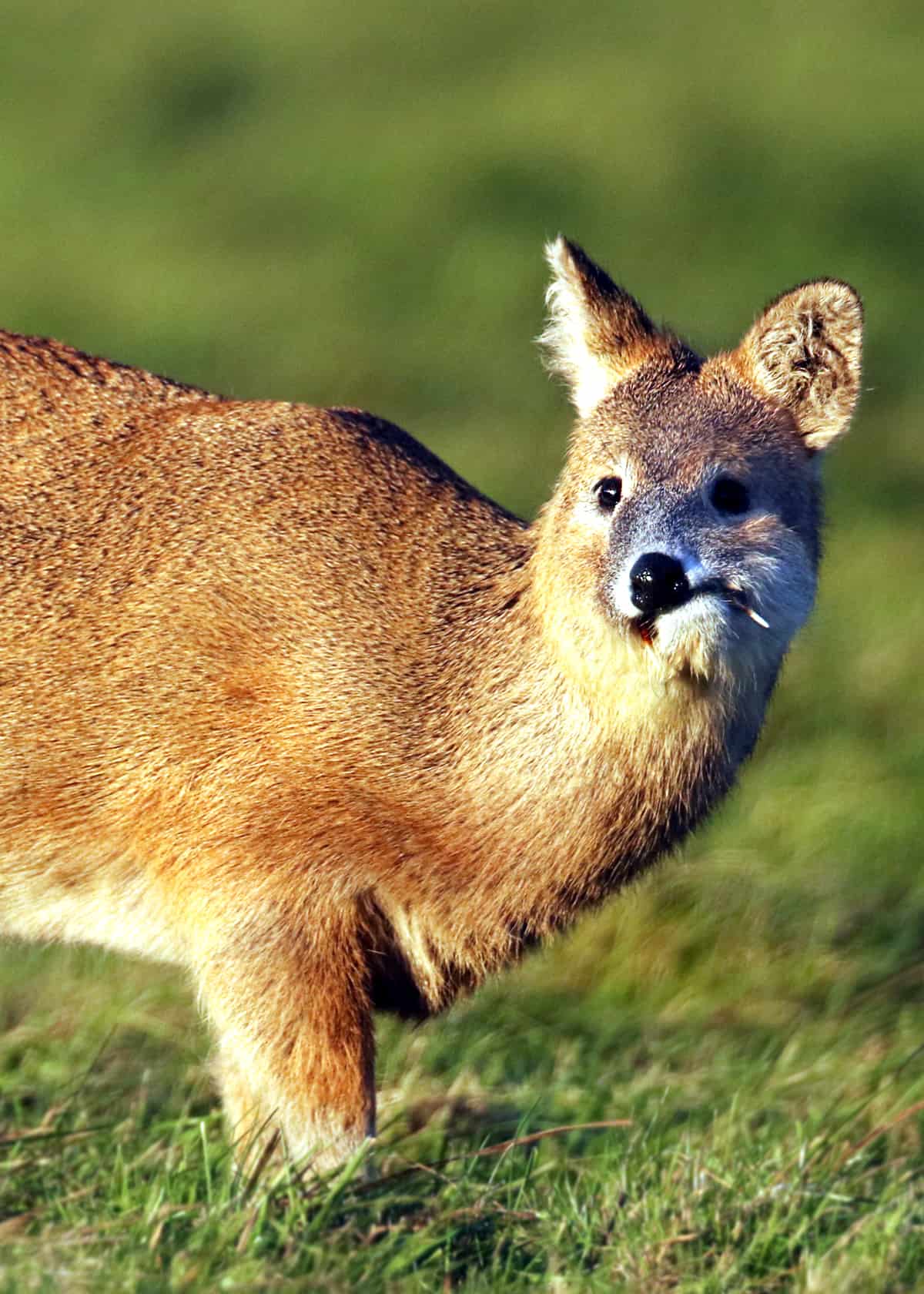
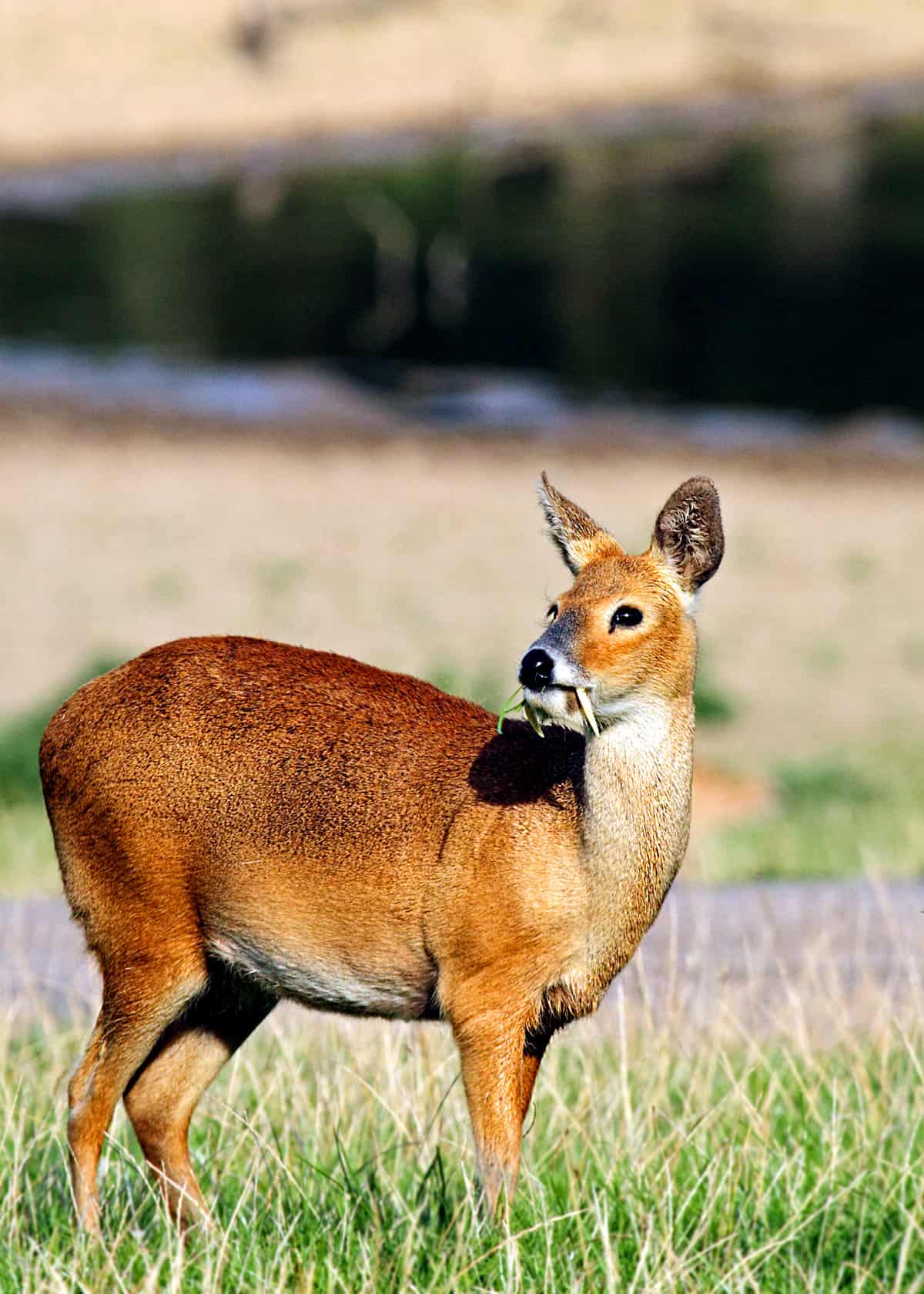
Nik Canavan
Sunday 24th of January 2021
I live on the edge of the Cambridgeshire fens and regularly see water deer while walking my dogs. The are pretty fast and are usually gone before the dogs have any idea they were there! I collect skulls and so I’m always on the lookout for a water deer skull, they are rather unusual.